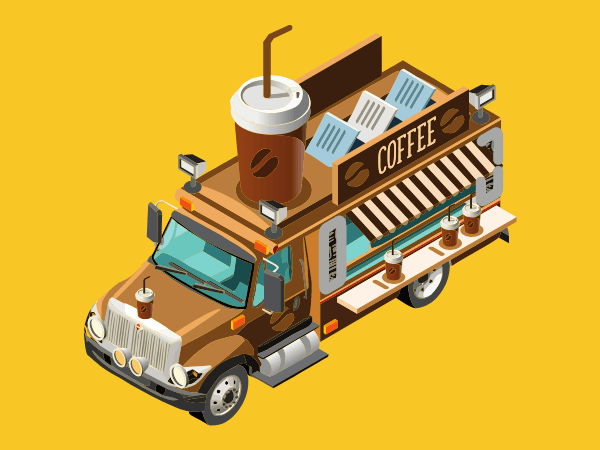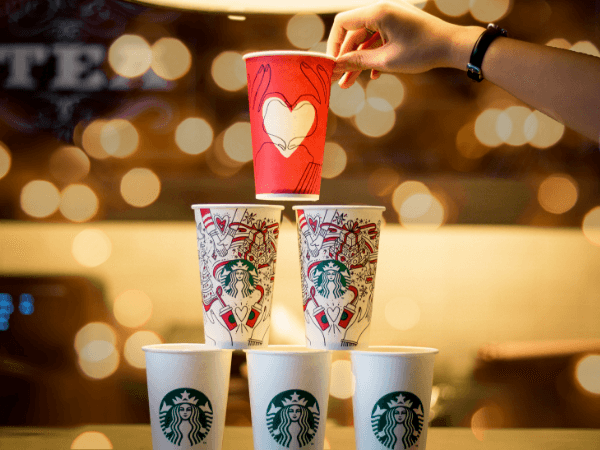When it comes to coffee, no one sells it like Starbucks. With smart branding, accessible locations, and clever seasonal campaigns, the coffee chain has become deeply embedded in American culture. They have essentially done for coffee what McDonald’s did for the burger.
Starbucks’ mega success has been in no small part thanks to their marketing strategies. Through innovative techniques and creating demand, Starbucks has managed to revolutionize not only the way the world drinks coffee but the way brands think about marketing. This is in part because of the way they approach advertising coffee.
Starbucks managed to create the idea that coffee was something to be enjoyed in a moment of relaxation. Compared to the drive-by, rapid-fire philosophy around coffee on the East Coast, Starbucks brought a unique, slower pace to their Seattle brews.

Now, no matter where a consumer is, they know they can stop for a moment at a Starbucks and take a second for a cup of coffee.
However, global brand recognition doesn’t happen overnight. It certainly doesn’t happen because one coffee house in one country decides to help people slow down their morning. Starbucks has strategically used cutting-edge technologies, brand messaging, and ambiance to create a brand that consumers immediately recognize anywhere in the world.

Location Targeting on a Whole New Level
You’ve probably heard “it’s like a Starbucks” used in reference to something that seems to appear in a town or city with great frequency. That’s because, no matter where you are in the United States, you’re only ever 170 miles away from a location. Yes — even if you’re standing alone on a remote mountain.
It’s been estimated that 80 percent of Americans live within 20 miles of a Starbucks, although for many Americans the nearest location is considerably closer than that. Now, with mobile app technologies, the coffee chain has taken their marketing and accessibility up a notch. Through the Starbucks app, which uses geotargeting, you can discover the closest location to you, your office, or your school — and you can order ahead.
By removing any kind of friction between desire and purchase, Starbucks has created an experience in which consumers are much more likely to return again and again. Consumers can order the most complicated cup of coffee they can dream up, then simply walk in the front door and snag it off the counter — all in a matter of minutes. With ease of use like that, combined with the chain’s practical ubiquity in cities around the world, they’re ensuring consumers can always get what they need with as little hassle as possible.

It’s All in the Cups
Perhaps one of the most recognizable aspects of the Starbucks brand is its iconic white cup with the green logo. Consumers recognize this brand so immediately that the company has even experimented with removing the logo entirely, running a printing of white cups with solid green circles emblazoned on them. However, it isn’t the everyday cups that get customers excited.
Starbucks first began using holiday cups in 1997, settling into their iconic red cups in 1998. Since then, each year has brought slight variations and changes to the cups in celebration of the holiday season. In some cases, too drastic of a change has sparked outrage, with the 2017 design most recently offending more conservative consumers.
In 2011, the company took their holiday cups into the future with an augmented reality app that allowed consumers to see winter creatures interact with their cup through their phone. Again, Starbucks used cutting-edge innovation to push their marketing efforts. Memorable branding like this sticks with the consumer on several levels and will keep them coming back each holiday season.

Speaking of Red Cups...
In addition to changing their cup styles and branding with each season, Starbucks also has a rotating selection of seasonal drinks only offered during some months of the year. You may immediately think of their iconic Pumpkin Spice Latte, generally only available during the fall and winter months. However, the coffee chain also has seasonal spring and summer drinks available as well.
For example, during the warm months in the U.S., Starbucks has promotional iced beverages. This may be combination iced teas with seasonal flavors or variations on their signature cold brews. One exciting spring beverage that debuted in their Reserve stores was a Rose Honey Latte.
Starbucks also has beverages that are special and specific to different locations around the world. For examples, Starbucks in Japan has a Sakura Blossom Cream Latte available only in its Japan locations — despite American bloggers’ pleas. Locational promotions like this one make it so that Starbucks is a necessary stop on everyone’s route, even when they’re on vacation.

A “Third Place” to Rest
Finally, one of the main goals of Starbucks’ marketing strategies is to make the brand’s mission a reality: to create a third place between work and home. This means Starbucks wants to make their physical locations something comfortable and inviting for consumers, where they can stop for a moment in their day and only be responsible for the cup of coffee in front of them. To create this, Starbucks has designed stores to be modern and sleek, but homey.
One particularly marketable aspect of this vibe is the music played in each location. Initially, you could buy CD's of what was being played up at the register, but with streaming music becoming more and more popular, the stores have moved to offering cards with information on where to find the playlist. They’ve marketed this as yet another way for consumers to take Starbucks with them wherever they go.
In this way, Starbucks isn’t only selling coffee — they’re selling a desirable environment. Additionally, it’s an environment so carefully catered and curated that, even if taken away from the context of a coffee chain, it would still feel like a Starbucks. It’s a feat of marketing unto itself — one that’s likely to serve the company for a long time in the future.




